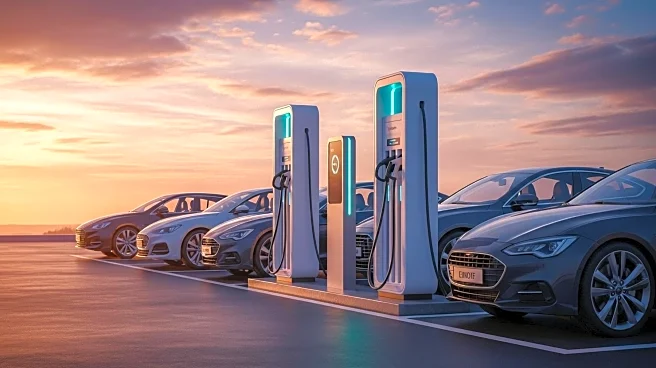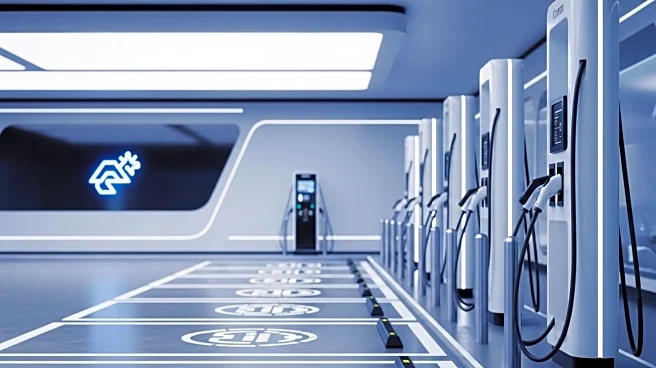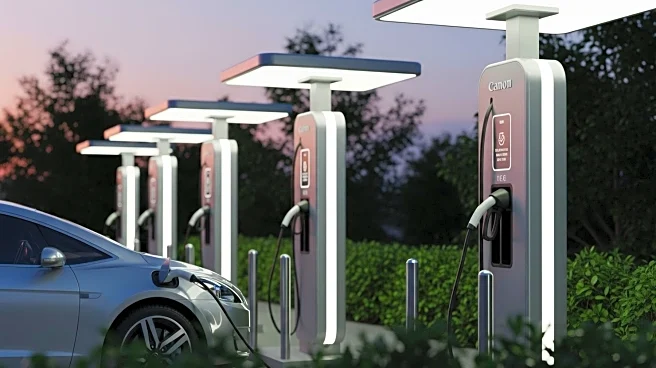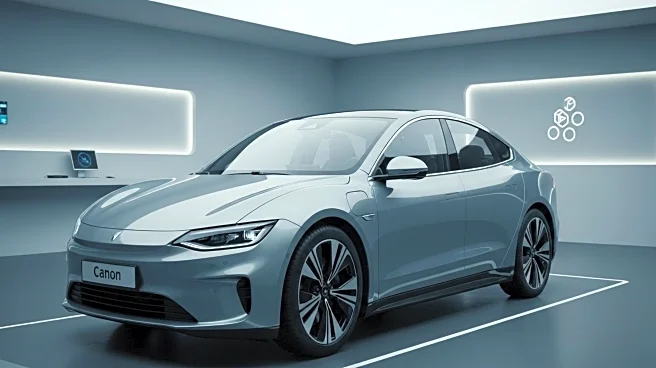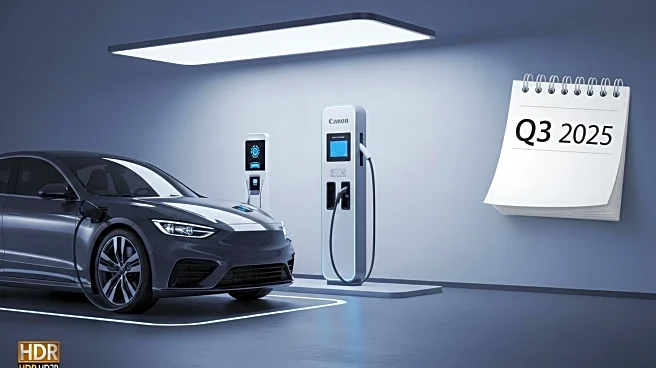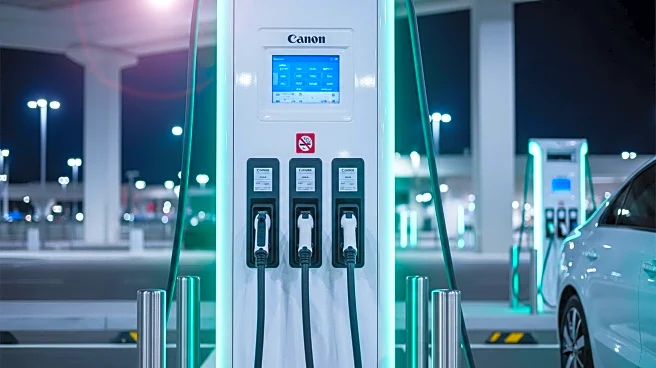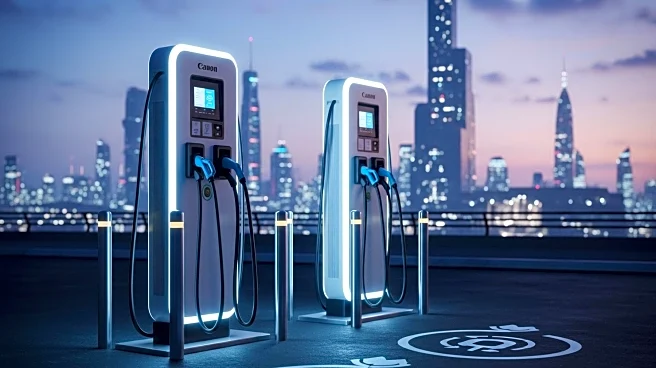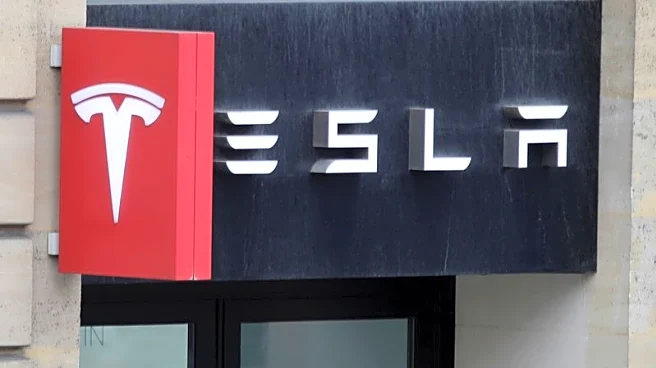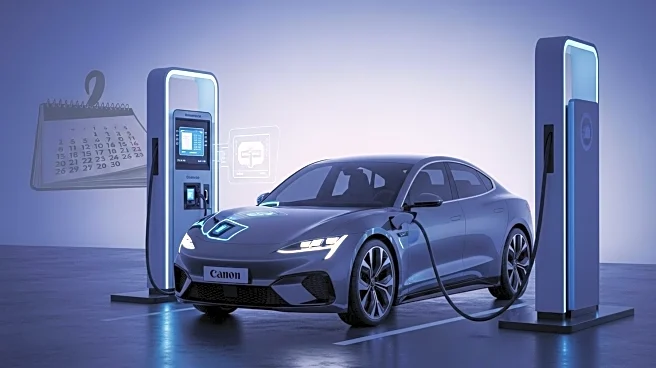What's Happening?
Tesla and General Motors (GM) are at the forefront of a surge in U.S. electric vehicle (EV) sales, achieving record numbers as federal incentives of up to $7,500 per purchase ended in September. According to data from Motor Intelligence, U.S. EV sales surpassed 1 million units in the first nine months of the year, with a new quarterly record of over 438,000 units sold in the third quarter. This represents a market share increase to 10.5% from 7.4% in the previous quarter. Tesla maintains its leadership with a 43.1% market share, although this is a decrease from 49% at the end of last year. GM has also made significant gains, increasing its market share from 8.7% to 13.8% through the third quarter.
Why It's Important?
The increase in EV sales highlights a significant shift in consumer preferences towards more sustainable transportation options. This trend is crucial for the automotive industry as it adapts to changing market demands and regulatory pressures to reduce carbon emissions. Tesla's continued dominance underscores its strong brand presence and innovation in the EV sector, while GM's growth indicates successful diversification of its vehicle lineup. The end of federal incentives may challenge future sales growth, but the current momentum suggests a robust market interest in EVs. This shift could lead to increased investments in EV infrastructure and technology, benefiting manufacturers and consumers alike.
What's Next?
As federal incentives have ended, the EV market may face challenges in maintaining its growth trajectory. Automakers like Tesla and GM will need to focus on competitive pricing, innovation, and expanding their EV offerings to sustain consumer interest. The industry may also see increased competition as more manufacturers enter the EV space. Policymakers and industry stakeholders will likely monitor the market's response to the end of incentives and consider new strategies to support the transition to electric mobility.

